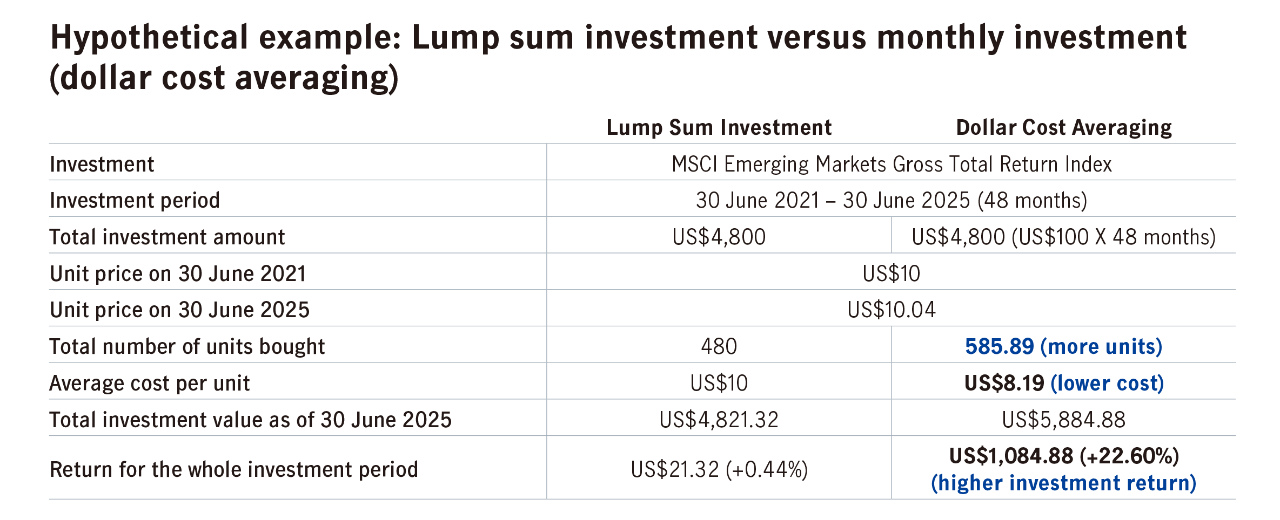
19 April, 2023
Can you predict the increase (or decrease) in the closing value of the emerging-market equity index three years from now? Without a crystal ball, it is impossible to correctly estimate future market trends, not to mention the ability to identify the best time to invest. If investors wish to reduce volatility and benefit from long-term growth when the markets move up and down, the automatically executed strategy of dollar cost averaging may be a feasible choice.
It is the practice of regularly investing a fixed dollar amount in a specific investment – regardless of fluctuations in the market price. As a result, an individual buys more units when prices are low and fewer units when prices are high.
Financial markets fluctuate, so it is often difficult to choose the best time to invest.
No single investment strategy guarantees easy profits or significant returns. So, it’s important to find a viable long-term approach that matches your risk appetite, financial goals, and budget. Here are the merits of dollar cost averaging:
However, if financial markets move higher for a prolonged period, this strategy may sacrifice the potential gains from an initial lump-sum investment.
Risk Diversification
There is no free lunch. But Risk Diversification comes close in investing. A diversified portfolio was shown to optimize returns with lower volatility in the long run.
Disadvantages of fixed deposit: is fixed income a better option?
What is a Fixed Deposit? What is Fixed Income? We explain why is fixed income now a potentially better option than fixed deposits.
Seven questions about dividends
Dividends can be a significant source of returns for equity investors. What are dividends? How do dividends fit into portfolio construction?
For illustrative purposes only.

The lump-sum approach could be more familiar to investors, many of whom already have relevant experience with equities, bonds, and funds. While both strategies have their own unique characteristics, returns may vary significantly under different market conditions. Market consensus leans towards a belief that if asset prices keep rising, then lump-sum investing can provide better returns for calm and seasoned investors, but we should also bear in mind that:
Time in the market will almost always be better than timing the market. Investment is a long-term venture that can potentially reward the patient with positive returns, while impulsive investors may experience losses.
Dollar cost averaging provides investors with a disciplined investment strategy that is easy to apply. Once the instruction is set, this approach automatically allocates regular fixed amounts regardless of market conditions and psychological factors, which helps avoid erroneous decisions. If investors believe this strategy could help them achieve their goals, they should actively identify assets with long-term growth potential and initiate a monthly investment plan.
Dollar cost averaging: An easier way to withstand volatile markets
If investors wish to reduce volatility and benefit from long-term growth when the markets move up and down, the passive strategy of dollar cost averaging may be a feasible choice.
Risk Diversification
There is no free lunch. But Risk Diversification comes close in investing. A diversified portfolio was shown to optimize returns with lower volatility in the long run.
Better income – Aim for higher, not the highest
If we focus too much on chasing the highest yield and upfront yield generation, we could suffer from early capital depletion and miss the total return opportunity towards the later stages of the investment journey.